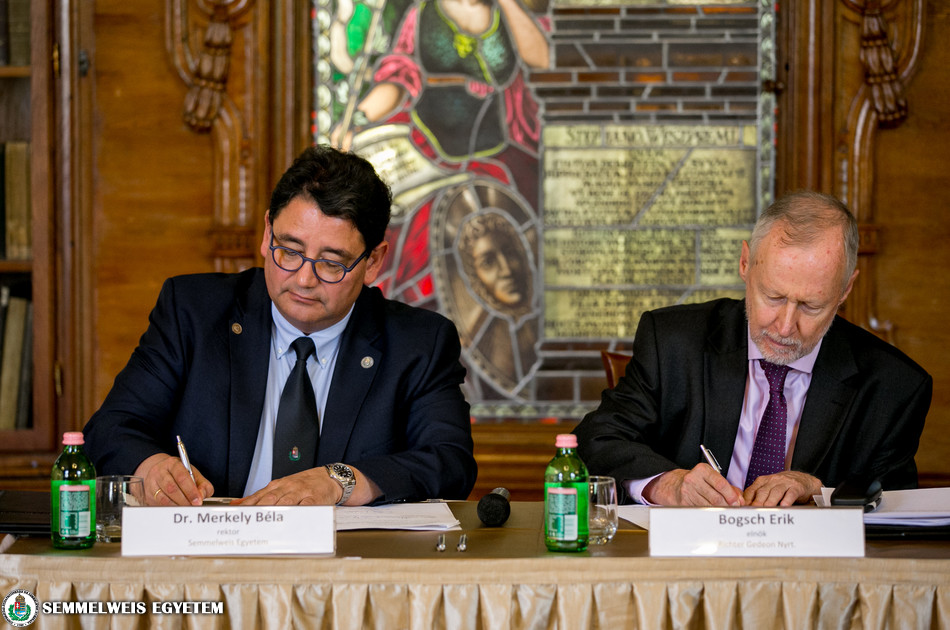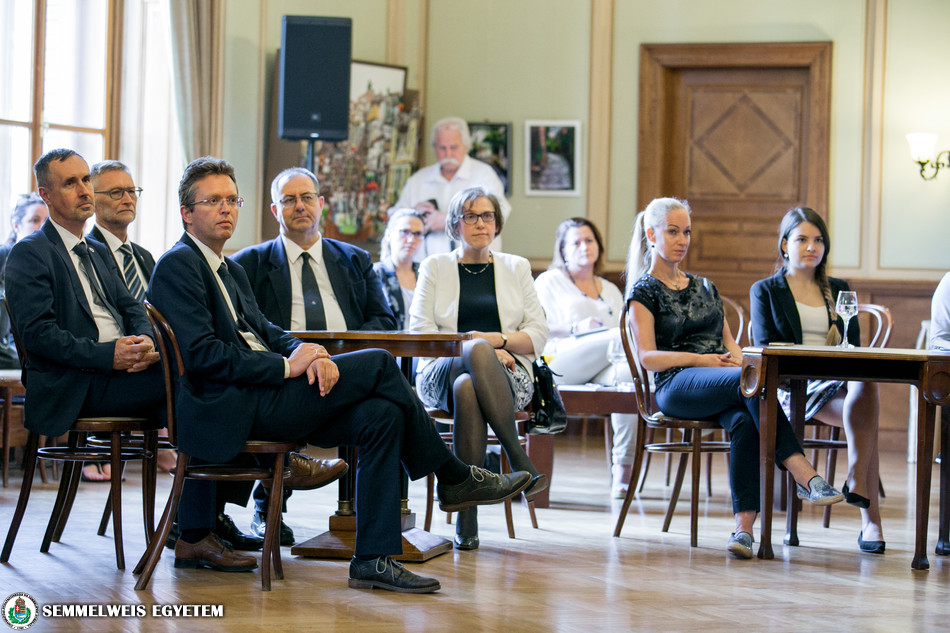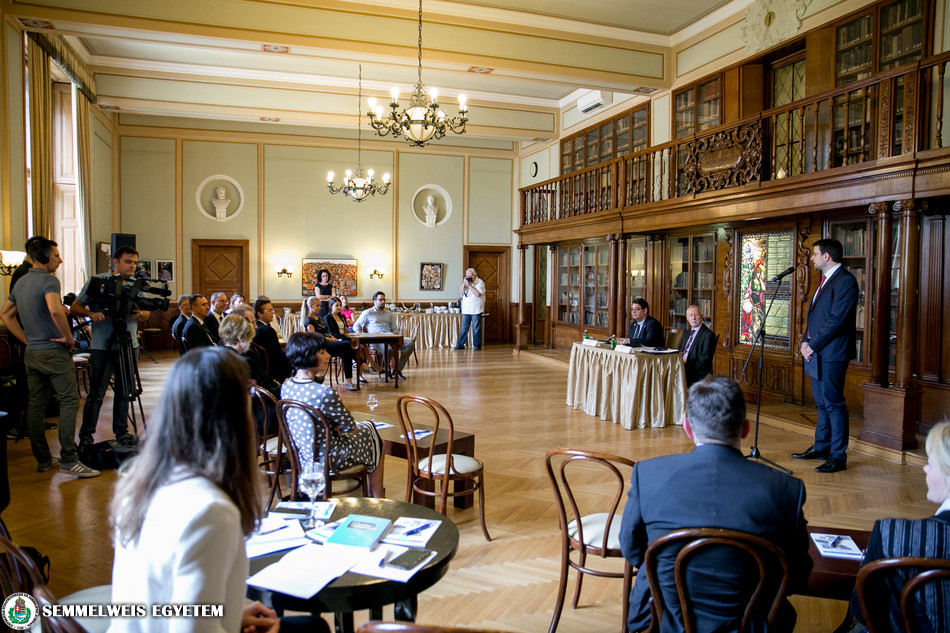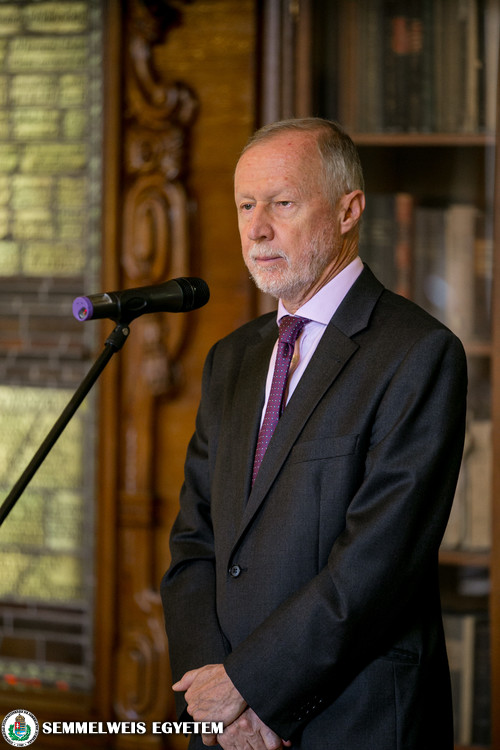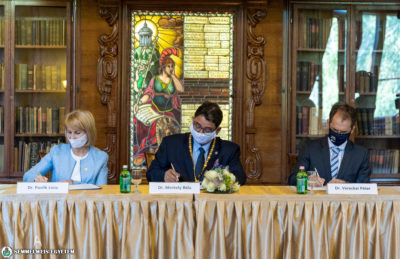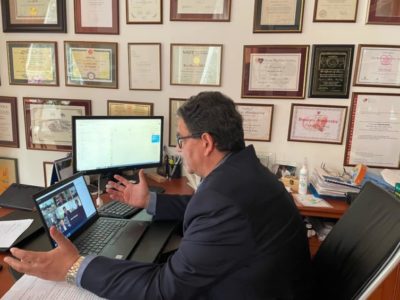Semmelweis University has signed a strategic cooperation agreement with Richter Gedeon Nyrt, Hungary’s biggest pharmaceutical company, on high-level cooperation between the two parties in the areas of R&D, innovation and education. Under the agreement, the drug company will launch a scholarship program for PhD students, as well as a talent nurturing competition at the university from September. The parties will also cooperate in renewing pharmacy training and R&D activities conducted at the university. The agreement was signed by rector Dr. Béla Merkely and Erik Bogsch, the chairman of Richter Gedeon Nyrt, at a press conference held in the Semmelweis Salon.
“Two institutions that are leaders in the areas of innovation and research both in Hungary and abroad, and that have long-standing historical traditions, are signing this strategic cooperation agreement today,” said rector Dr. Béla Merkely at the event, pointing out that the histories of Semmelweis University and Richter Gedeon have already intersected on several occasions.
As part of the cooperation, the two institutions will participate in tenders in their areas of interest with a jointly agreed scientific strategy. In addition, Richter will set aside HUF 20 million a year under a thematic tender to implement PhD research topics at the university that are related to the company’s R&D activities, said the rector regarding the details of the cooperation agreement. In order to support the university’s education activities, the company, in addition to a scholarship program for PhD students, will also launch a talent nurturing competition from September and provide advice on renewing the curriculum of pharmacy training, added Dr. Béla Merkely. He noted that thanks to the Semmelweis XXI Development Project, the university is facing huge developments, an important element of which is the building of the Hőgyes–Schöpf-Merei Pharmacy Research Center and a new pharmacy campus, where Richter will participate by providing recommendations during the planning and implementation phases.
Dr. Béla Merkely emphasized that the establishment of the Health Industry-Biotechnology Science Park – which operates on the borders of the university and industry – and the innovation ecosystem that provides the basis for it, as well as defining the main research-development directions, are also a part f the current agreement. He added that the challenges of the 21st century require university leaders to bring their institutions closer to industry and the economic needs of the market. This marks the beginning of a new approach and a new era, he said, in which the Hungarian government, three major universities (Semmelweis University, Pázmány Péter Catholic University, National University of Public Service), and members of the health and pharmaceutical industries work together to create a competitive, innovative development that creates and protects value. If it operates successfully, it will support the efficient transfer of knowledge and labor between small and medium-sized businesses, large corporations and universities, by creating new jobs.
“This opportunity could benefit both sides; the teaming up of two good brands could only lead to success,” said Erik Bogsch, the chairman of Richter Gedeon Nyrt. He added that the company has long had good relations with Semmelweis University, and they have spent HUF 429 million on joint research projects over the past 10 years. He also pointed out that the company spends around 10% of its revenue on R&D. “One of the main objectives of the cooperation is to keep talented people in Hungary and be able to offer them jobs, which is important for the company, the university and the country as well,” said Erik Bogsch.
Eszter Keresztes
Translation: Tamás Deme
Photo: Attila Kovács – Semmelweis University

